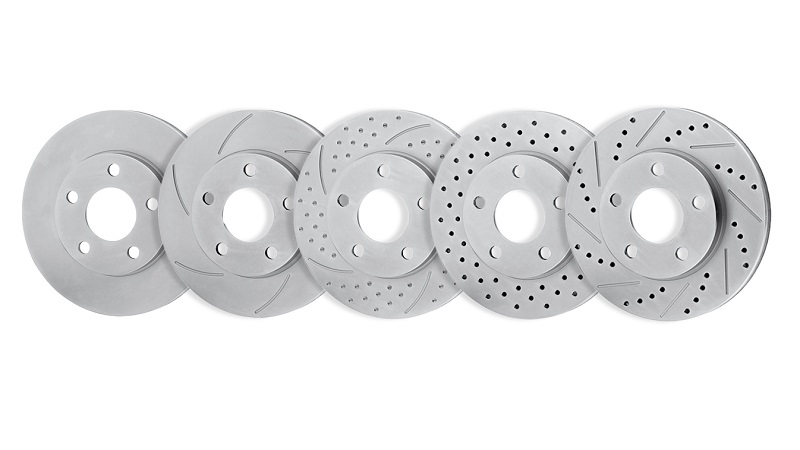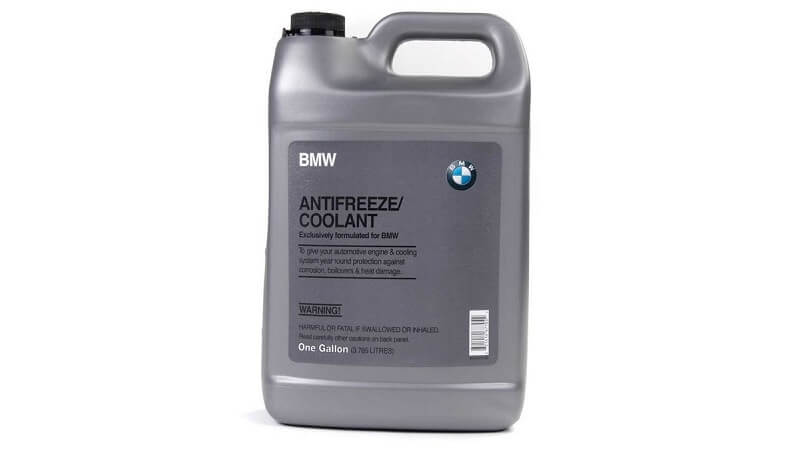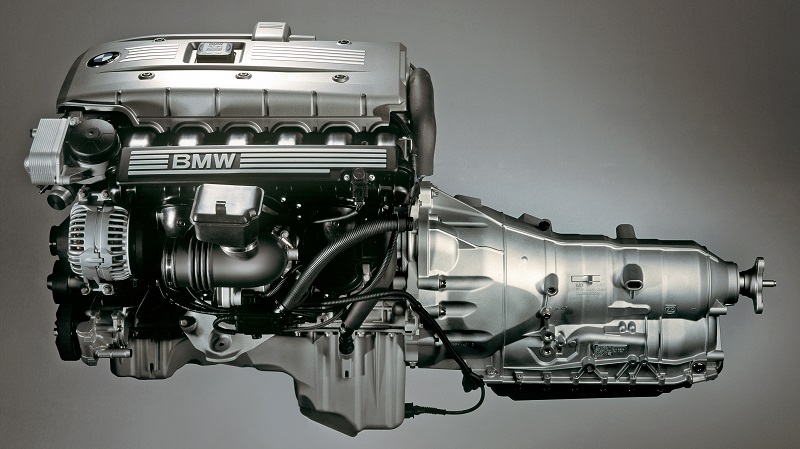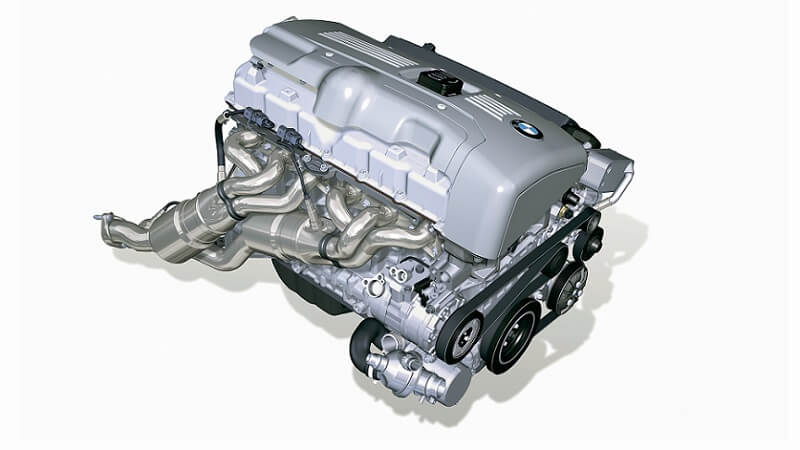Plain, cross-drilled, slotted…. What’s the difference between these brake rotor designs? This is a very common question and can be confusing to many BMW owners. The proper answer will be different for different BMW owners and enthusiasts.
That being said, we’ve put together a short guide that explains the pros and cons of each design. As it turns out, there’s no “best” option overall. Each design has its own purpose. Let’s begin with the most common type of brake rotors you’ll encounter – the OE plain rotor.
Plain, or Smooth Brake Rotor

The plain rotor is the most common design found on production cars these days. It’s an economical yet rather functional design that offers a large braking surface with plenty of area for the pads to bite into. A plain rotor is a current benchmark. About 99% of drivers out there will do just fine running plain, smooth brake rotors on their cars.
Where these fall short is performance. A plain braking surface means that the rotor will heat up much faster under heavy use. Heat dissipation is generally not a strong suit of plain rotors.
However, this issue becomes quite obvious once you start pushing a smooth rotor to its limits. Out on the track, smooth rotors tend to lead to brake fade, overheating issues, and more.
That being said, if you’re looking for a cheap and effective solution for everyday commuting, plain rotors are the way to go.
Positives:
- Plain/smooth brake rotors have the most frictional surface area (no holes or slots) and are often more effective in actual braking power.
- Plain/Smooth rotors are commonly quieter than slotted or drilled rotors and wear very well.
- Not prone to cracking.
- Plain/smooth brake rotors are typically less expensive than drilled or slotted rotors.
Negatives:
- The friction surface is not vented and does not allow the gasses from hot brake pads to be vented from between the pad and the rotor surfaces. This can cause the pad to “float” over the rotor’s surface under very high heat conditions resulting in a loss of friction and braking during high-performance or track driving conditions.
- They look “ho-hum” (a perfectly valid negative).
Cross-Drilled Brake Rotors

Just about every rotor these days is ventilated. In other words, it’s not a solid piece of metal that is being sandwiched by brake pads from either side. Rather, you have two disc surfaces mated together with venting vanes in between.
However, this isn’t enough to keep the rotors cool enough when pushed on track, nor does it help with evacuating the gas layer that forms between the pad and the rotor.

One of the solutions was to drill holes in rotors, which is how we got cross-drilled rotors. Drilling holes help get some of those gases away from the pads, allowing them to bite into the braking surface with more efficiency.
Yet, this feature comes at a cost. Cross-drilled rotors have a somewhat compromised integrity. Every single hole is a potential failure point. When pushed to the edge, drilled brake rotors can crack between two holes, which defeats the purpose of this design.
Positives:
- The drilled holes provide an escape for the gas generated by hot brake pads. This prevents gas floating that results in a loss of braking power during high-performance or track driving conditions.
- They look cool (often the reason that we buy and install various parts on our BMWs).
Negatives:
- Slightly less braking frictional area and cooling mass, compared to plain/smooth rotors.
- Can be noisier than plain/smooth rotors in some applications.
- Can create wear patterns on the rotor friction surface.
- Cracking can occur between the drilled holes, in extreme conditions.
- Typically higher cost than plain/smooth rotors.
Slotted Brake Rotors
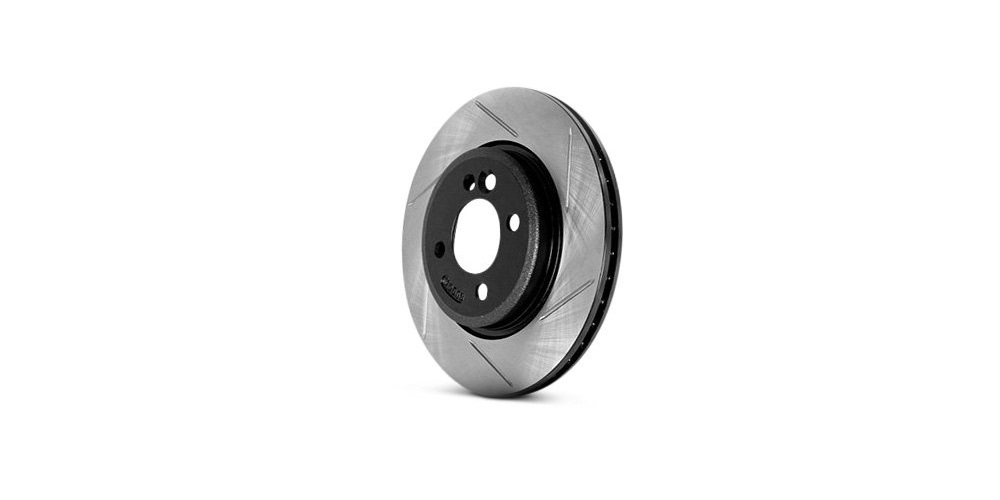
The answer to solving the structural integrity issues of drilled brake rotors came in the form of a slotted rotor design.
Instead of drilling holes, braking system engineers figured that milling slots in the braking surface of a rotor would offer the same if not better gas evacuation properties — all while eliminating any structural issues.
Furthermore, the implementation of slots instead of holes meant more even rotor wear, less noise, and generally good performance all around. Unlike the cross-drilled design, you’ll find slotted rotors on many cars used in motorsports.
Positives:
- The slots provide an escape for the gas generated by hot brake pads. This prevents gas floating that results in a loss of braking power during high-performance or track driving conditions.
- Typically wear more evenly than cross-drilled rotors.
- Typically less prone to make additional braking noise, compared to cross-drilled rotors.
- Typically less prone to cracking, compared to cross-drilled rotors.
- They look cool (often the reason that we buy and install various parts on our BMWs).
Negatives:
- Slightly less braking frictional area, compared to plain/smooth rotors.
- Typically higher cost than plain/smooth rotors.
Slotted and Cross-Drilled Brake Rotors
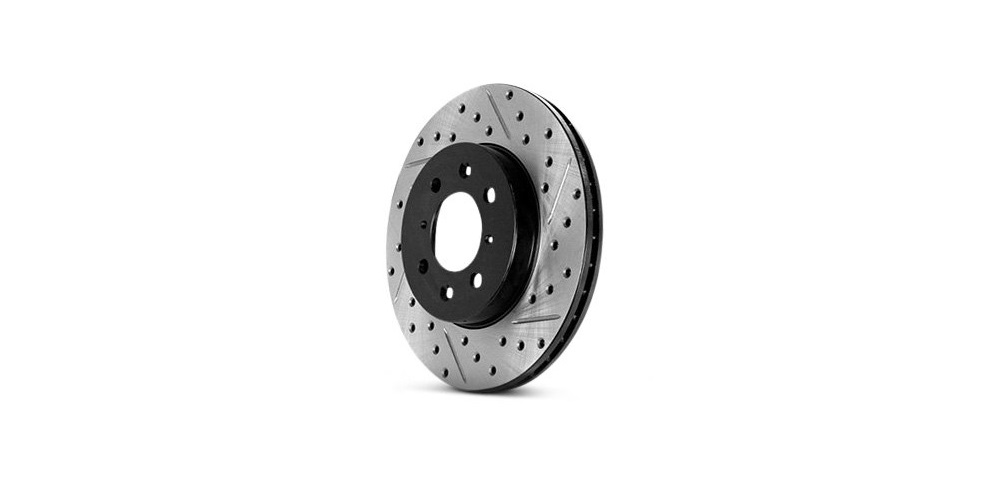
The last type of brake rotor you might come across are rotors that combine the slotted and cross-drilled design. These combine the features of both of these popular designs. However, you also get all the negatives as well. For the most part, having both holes and slots on your braking surface means that you’re working with less area compared to either slotted or drilled rotors.
The only actual upside to going with a drilled and the slotted rotor is the appearance. If you’re going for performance, you’re much better off spending your money on a decent set of slotted rotors.
Positives:
- The slots and drilled holes provide an escape for the gas generated by hot brake pads. This prevents gas floating that results in a loss of braking power during high-performance or track driving conditions.
- Typically wear more evenly than cross-drilled rotors due to the slotting evening out the pad and rotor wear patterns.
- They look cool (often the reason that we buy and install various parts on our BMWs)
Negatives:
- Slightly less braking frictional area, compared to plain/smooth rotors.
- Cracking can occur between the drilled holes, in extreme conditions.
- Can be noisier than plain/smooth rotors in some applications.
- Typically higher cost than plain/smooth rotors.
Which Brake Rotor Design is Right For You?

Choosing a brake rotor design comes down to your needs, but also your wants. Let’s be real, most of us car enthusiasts are guided by factors other than pure utilitarianism. That being said, you kinda have to know what kind of performance you expect from your brakes before you set off to buy a set of brake rotors.
If you’re looking for something reasonably affordable and durable for casual street use, you’re best off getting a set of plain rotors for your car. This is what your BMW most likely came with, and what the factory recommends as an OE replacement for your model.
Track Days
On the other hand, if you’re planning on doing track days, or full-on racing, you’ll probably want to get a set of slotted or cross-drilled rotors. Are these absolutely necessary for track day events? Not really, but they definitely help. If you’re building your brakes from the ground up, a set of slotted rotors is a great foundation for a performance setup.
Keep in mind that drilled and slotted brake rotors take longer to warm up. In other words, you could experience less-than-optimal braking under normal street conditions. This is especially true if you plan on using aggressive brake pads.
As you can see, the best brake rotor is dependent on you, how you use your BMW and what you desire from your BMW in braking performance and/or style. There is no wrong choice here, but you will be happier with your brake rotors if you make an educated decision, using the notes and parameters discussed here.
Find Brake Rotors that Match Your BMW
The absolute most important factor when shopping for BMW brake rotors is to get ones that are guaranteed to fit your car. We’ve put together a system that will help you find parts that are made for your BMW’s year, make and model. Head over to our store, select your car and navigate over to our brake rotor section. You’ll find an assortment of Genuine BMW, OEM, and performance aftermarket options.

